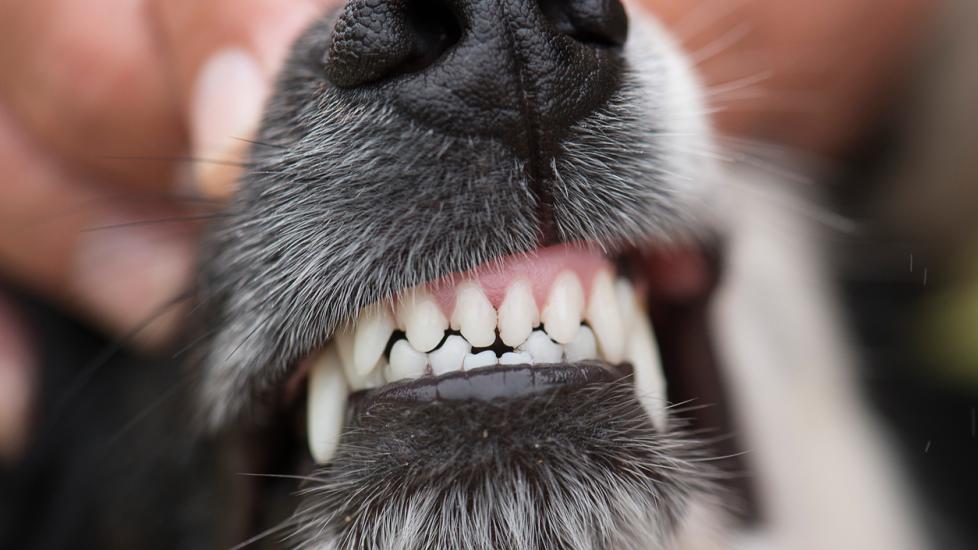Introduction:
When your furry friend’s teeth start chattering, it can be a puzzling and sometimes concerning behavior. Understanding the reasons behind this phenomenon is crucial for providing proper care and maintaining your dog’s oral health. This article delves into the various factors that may cause dogs to clatter their pearly whites, offering insights on how you can help alleviate these issues and keep your pooch happy and healthy.
What Is Dog Teeth Chattering?
Teeth chattering in dogs refers to a rapid clicking or grinding of the teeth, which can occur without any apparent reason. It’s important to distinguish between normal teething behaviors (which usually happen when puppies are young) and persistent chattering later in life. While some instances of teeth chattering might be benign, others could indicate underlying dental problems or stress-related conditions.
Possible Causes of Dog Teeth Chattering:
1. Dental Pain: Just like humans, dogs experience toothaches due to plaque buildup, tartar formation, gum disease, fractured or cracked teeth, or even an abscessed tooth. These painful situations can lead to involuntary jaw movements as they attempt to soothe discomfort.
2. Anxiety/Stress: Dogs often exhibit signs of anxiety through physical manifestations such as lip licking, panting, whining, and yes—teeth chattering. Stressful situations like separation from owners, loud noises (fireworks, thunderstorms), or changes in environment can trigger this response.
3. Hunger/Appetite: Some dogs will “beg” by gently tapping their front teeth together in anticipation of food. However, excessive or continuous chattering during meal times might suggest an issue with digestion or dietary preferences.
4. Cold Temperatures: Exposure to chilly temperatures can prompt dogs to shiver, which may inadvertently result in teeth chattering if the muscles around the mouth contract rapidly.
5. Play Behavior: During moments of intense play or excitement, a dog’s body goes into overdrive mode. Rapid breathing combined with overactive jaws can create a rhythmic clacking sound that is not necessarily indicative of distress.
6. Medical Conditions: Certain medical ailments beyond dental issues can also contribute to teeth chattering, including neurological disorders, seizures, or even poisoning cases where toxins affect the nervous system.
7. Inherited Traits: Some breeds have naturally higher muscle sensitivity or jaw mechanics that predispose them to more pronounced gnawing sounds than others.
How to Address Dog Teeth Chattering:
1. Regular Dental Checks: Schedule routine checkups with your veterinarian to inspect your pet’s mouth for potential issues early on. Preventive measures such as professional cleanings can reduce pain and maintain good oral hygiene.
2. Environmental Management: Identify sources of stress in your dog’s surroundings and take steps to mitigate them. For example, using calming music or pheromone diffusers can create a soothing atmosphere at home.
3. Healthy Diet & Nutrition: Feed your pup high-quality foods rich in fiber and protein to support strong bones and muscles. Monitor portion sizes to prevent obesity, which can exacerbate joint pain and other health concerns.
4. Positive Reinforcement Training: Teach your dog alternative ways to express needs or emotions through positive reinforcement techniques. Reward calmness with treats and praise rather than punishing anxious behaviors.
5. Supervision & Monitoring: Always supervise your dog while playing to ensure they don’t engage in activities that could damage their teeth or cause unnecessary strain on their jaw joints.
6. Consultation with Professionals: If you suspect a serious problem, consult with a veterinary dentist who specializes in treating complex oral diseases affecting our four-legged companions.
Conclusion:
By being observant and attentive to your dog’s well-being, you can better understand why they might be experiencing teeth chattering episodes. Regular vet visits, environmental adjustments, nutritional planning, training efforts, and professional guidance all contribute towards creating a comfortable lifestyle for your beloved pet. Remember that every dog is unique; what works for one may not work for another. Stay vigilant and responsive to your pup’s needs!
